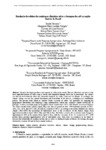Use este identificador para citar ou linkar para este item:
http://www.alice.cnptia.embrapa.br/alice/handle/doc/1035222Registro completo de metadados
| Campo DC | Valor | Idioma |
|---|---|---|
| dc.contributor.author | HAMADA, E. | pt_BR |
| dc.contributor.author | VOLPATO, M. M. L. | pt_BR |
| dc.contributor.author | FERREIRA, G. de L. | pt_BR |
| dc.contributor.author | ALVES, H. M. R. | pt_BR |
| dc.contributor.author | SOUZA, V. C. O. de | pt_BR |
| dc.contributor.author | VIEIRA, T. G. C. | pt_BR |
| dc.date.accessioned | 2016-01-26T11:11:11Z | pt_BR |
| dc.date.available | 2016-01-26T11:11:11Z | pt_BR |
| dc.date.created | 2016-01-26 | pt_BR |
| dc.date.issued | 2015 | pt_BR |
| dc.identifier.citation | In: SIMPÓSIO BRASILEIRO DE SENSORIAMENTO REMOTO, 17., 2015, João Pessoa. Anais... São José dos Campos: INPE, 2015. | pt_BR |
| dc.identifier.uri | http://www.alice.cnptia.embrapa.br/alice/handle/doc/1035222 | pt_BR |
| dc.description | Abstract: Brazil is the largest producer and exporter of coffee in the world. The rust (Hemileia vastratrix) is the most important disease of coffee crop in Brazil, with important damage effects on its production. The climate can directly and indirectly affect the interaction between the coffee plant and the fungus. Accordingly, the climate change can alter the spatial distribution and favorability of the disease, resulting in new distribution pattern. The present study aimed to simulate future scenarios of coffee rust epidemics by mapping the geographical distribution and adopting a logic mathematical criteria that estimates climate favorability of pathogen incidence and data projected by global climate models from IPCC AR4 (Fourth Assessment Report). The study considered the months (April, May, and June) of period of 1961-1990 and future periods of 2011-2040, 2041-2070, and 2071-2100, B1 and A2 scenarios of IPCC. According to the results obtained, for current climate (1961-1990) the percentage of unfavorable areas to the occurrence of the disease ranges from approximately 40% in April, 20% in May, and 10% in June. For future scenarios, the occurrence ratio changes to approximately 20% in the months from April to June, with the exception of the A2 scenario to 2071-2100 period, which provides approximately 10% of unfavorable area. Thus, there is a tendency in the future to increase the favorability of incidence of the rust on coffee in Southeast region of Brazil. On average, the maps obtained in scenarios B1 and A2 had a similar tendency. | pt_BR |
| dc.language.iso | por | pt_BR |
| dc.rights | openAccess | pt_BR |
| dc.subject | Disease | pt_BR |
| dc.subject | Geoprocessing | pt_BR |
| dc.subject | Mudanças climáticas | pt_BR |
| dc.subject | Geoprocessamento | pt_BR |
| dc.subject | Hemileia vastratrix | pt_BR |
| dc.subject | Coffee | pt_BR |
| dc.title | Simulação dos efeitos das mudanças climáticas sobre a ferrugem do café na região Sudeste do Brasil. | pt_BR |
| dc.type | Artigo em anais e proceedings | pt_BR |
| dc.date.updated | 2018-01-10T11:11:11Z | pt_BR |
| dc.subject.thesagro | Café | pt_BR |
| dc.subject.thesagro | Ferrugem | pt_BR |
| dc.subject.thesagro | Doença de planta | pt_BR |
| dc.subject.thesagro | Clima | pt_BR |
| dc.subject.thesagro | Coffea Arábica | pt_BR |
| dc.subject.nalthesaurus | Rust diseases | pt_BR |
| dc.subject.nalthesaurus | Climate change | pt_BR |
| dc.format.extent2 | p. 2629-2636 | pt_BR |
| riaa.ainfo.id | 1035222 | pt_BR |
| riaa.ainfo.lastupdate | 2018-01-10 -02:00:00 | pt_BR |
| dc.contributor.institution | EMILIA HAMADA, CNPMA; MARGARETE MARIN LORDELO VOLPATO, EPAMIG; GIOVANE DE LIMA FERREIRA, COTUCA-UNICAMP; HELENA MARIA RAMOS ALVES, SAPC; VANESSA CRISTINA OLIVEIRA DE SOUZA, UNIFEI; TATIANA GROSSI CHQUILOFF VIEIRA, UNIFEI. | pt_BR |
| Aparece nas coleções: | Artigo em anais de congresso (CNPMA)  | |
Arquivos associados a este item:
| Arquivo | Descrição | Tamanho | Formato | |
|---|---|---|---|---|
| 2015AA006.pdf | 1,7 MB | Adobe PDF |  Visualizar/Abrir |









